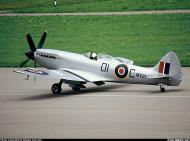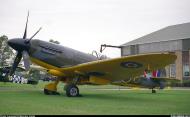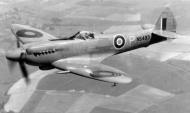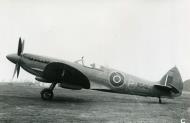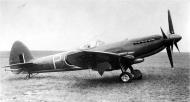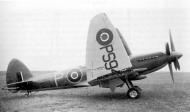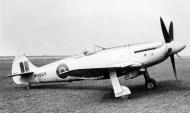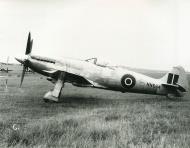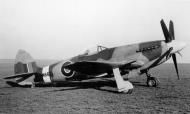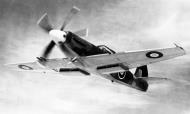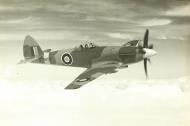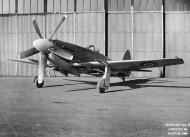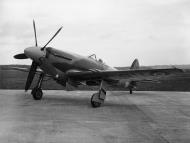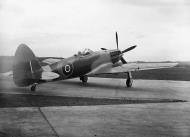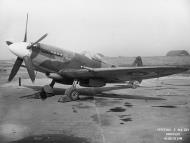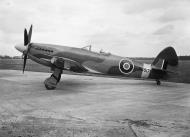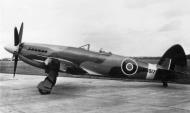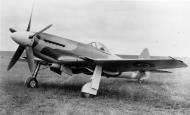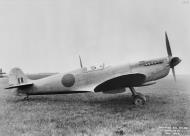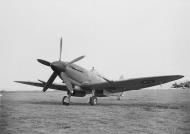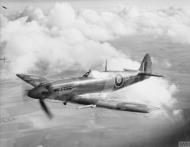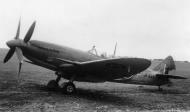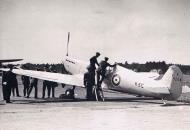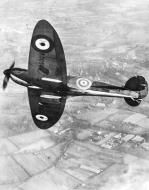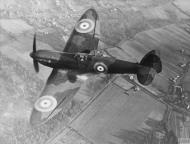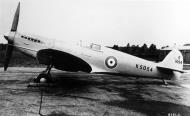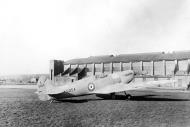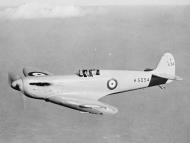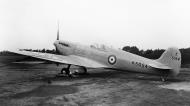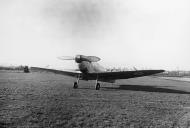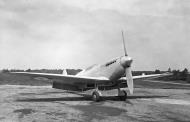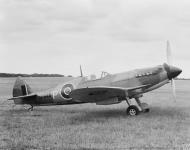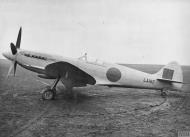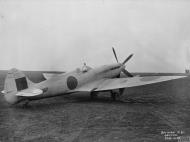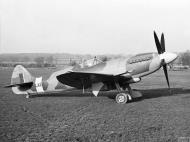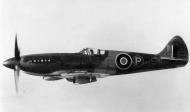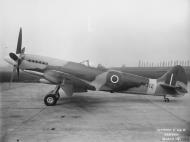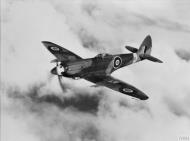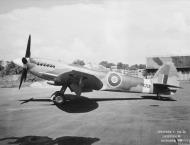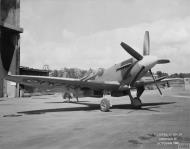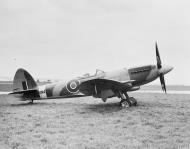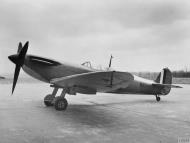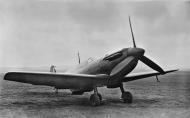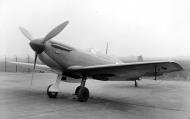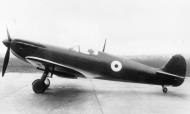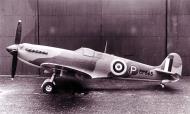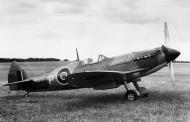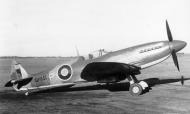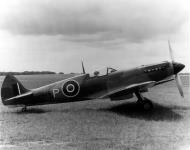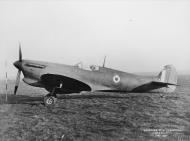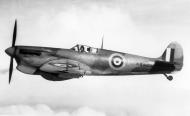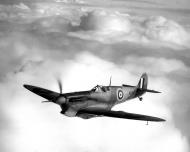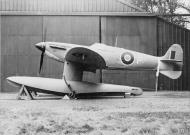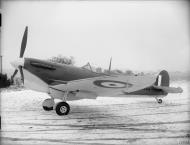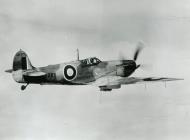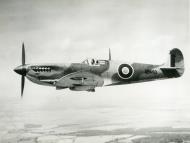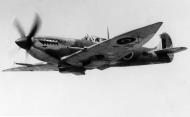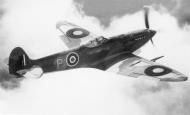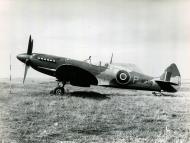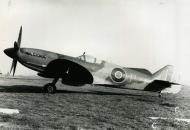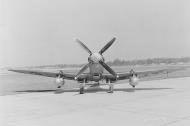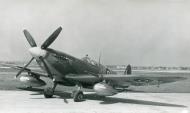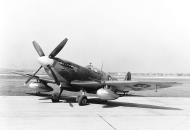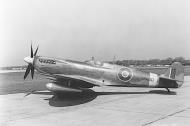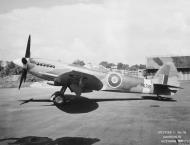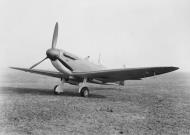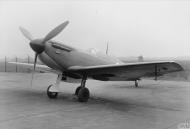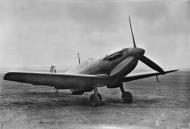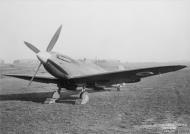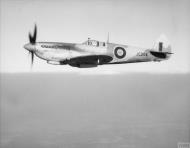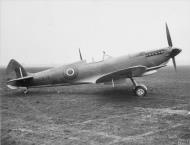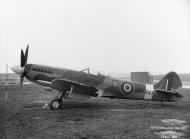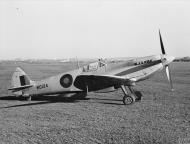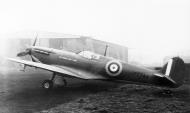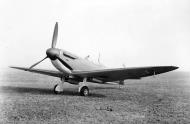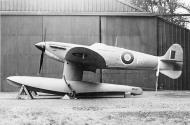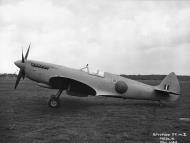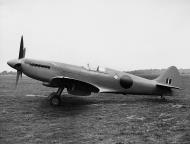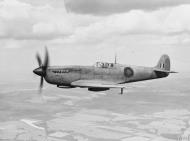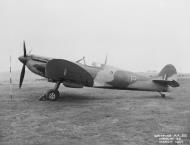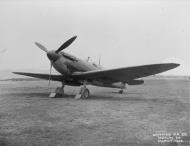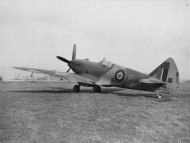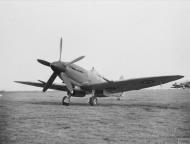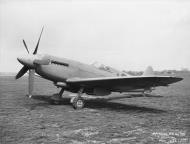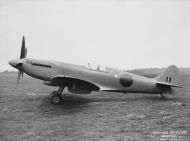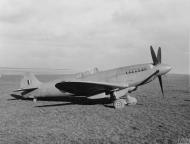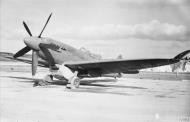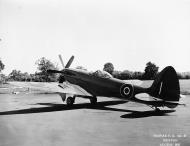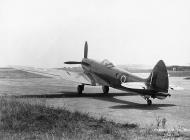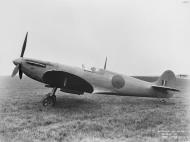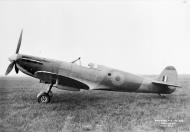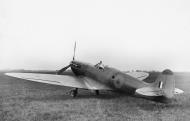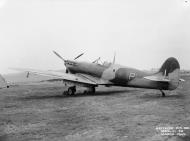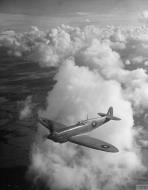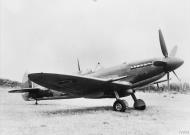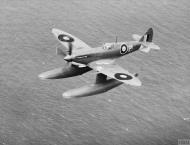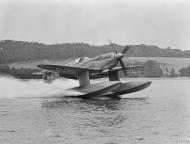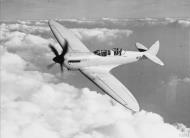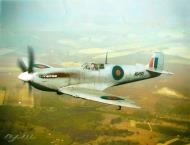Supermarine Spitfire photographs
Spitfire F24 PK713 factory fresh IWM MH5285
Spitfire F Mk.24, PK713. Ground view
Imperial War Museum IWM MH 5285 https://www.iwm.org.uk/collections/item/object/205212388
Spitfire PR Mk12 Prototype L1004 IWM MH5241
Spitfire PR Mk.12 Prototype, L1004. Ground view.
Imperial War Museum IWM MH 5241 https://www.iwm.org.uk/collections/item/object/205226460
Spitfire PR Mk12 Prototype L1004 IWM MH5242
Spitfire PR Mk.12 Prototype, L1004. Ground view.
Imperial War Museum IWM MH 5242 https://www.iwm.org.uk/collections/item/object/205226461
Spitfire PR Mk14 JF318 Prototype IWM MH5269
Spitfire PR Mk14 JF318 Prototype IWM MH5270
Spitfire PR Mk14 JF318 Prototype IWM HU2956
Spitfire Mk.14c JF318 Fourth prototype with modified tailfin. Ground view.
Imperial War Museum IWM MH 5269 https://www.iwm.org.uk/collections/item/object/205226462
Imperial War Museum IWM MH 5270 https://www.iwm.org.uk/collections/item/object/205226463
Imperial War Museum IWM HU 2956 https://www.iwm.org.uk/collections/item/object/205226464
Spitfire FIIa Prototype factory fresh England IWM HU2191
Spitfire F Mk.2a. Ground view.
Imperial War Museum IWM HU 2191 https://www.iwm.org.uk/collections/item/object/205226407
Spitfire PR19 Prototype SW777 factory fresh England May 1944 IWM MH5278
Spitfire PR Mk.19, Prototype, SW777 ground view.
Imperial War Museum IWM HU 1805 https://www.iwm.org.uk/collections/item/object/205226472
Imperial War Museum IWM MH 5278 https://www.iwm.org.uk/collections/item/object/205226473
Spitfire PR19 Prototype RM632 factory fresh England May 1944 IWM MH5280
Spitfire PR Mk.19, RM632, ground view.
Imperial War Museum IWM MH 5280 https://www.iwm.org.uk/collections/item/object/205226474
Spitfire PR19 Prototype with long range tank England May 1944 IWM MH5790
Spitfire PR Mk.19 fitted with long range tank, ground view.
Imperial War Museum IWM MH 5790 https://www.iwm.org.uk/collections/item/object/205226475
Spitfire 20 Prototype DP845 England IWM HU1680
Spitfire Mk.20, DP845, Prototype, ground view.
Imperial War Museum IWM HU 1680 https://www.iwm.org.uk/collections/item/object/205226476
Spitfire 21 Prototype LA215 England IWM HU1681
Spitfire Mk.21, LA215, ground view.
Imperial War Museum IWM HU 1681 https://www.iwm.org.uk/collections/item/object/205226477
Spitfire 22 Prototype PK312 in flight England IWM HU1682
Spitfire Mk.22. Prototype, PK312, in flight.
Imperial War Museum IWM HU 1682 https://www.iwm.org.uk/collections/item/object/205226478
Spitfire 24 Prototype VN479 England IWM HU1683
Spitfire Mk.24., VN479, ground view.
Imperial War Museum IWM HU 1683 https://www.iwm.org.uk/collections/item/object/205226479
Spitfire 21 Prototype LA187 England Feb 1944 IWM MH5282
Spitfire F Mk.21, 3rd Prototype, LA187. Ground view.
Imperial War Museum IWM MH 5282 https://www.iwm.org.uk/collections/item/object/205226480
Spitfire 21 Prototype LA187 England Feb 1944 IWM MH5283
Spitfire F Mk.21, 3rd Prototype, LA187. Ground view.
Imperial War Museum IWM MH 5283 https://www.iwm.org.uk/collections/item/object/205226481
Spitfire 22 Prototype PK312 England Mar 1945 IWM MH5284
Spitfire F Mk.22, Prototype, PK312. Ground view.
Imperial War Museum IWM MH 5284 https://www.iwm.org.uk/collections/item/object/205226482
Spitfire 24 Prototype PK713 England Oct 1946 IWM MH5285
Spitfire F Mk.24, PK713. Ground view.
Imperial War Museum IWM MH 5285 https://www.iwm.org.uk/collections/item/object/205226483
Spitfire 24 Prototype PK713 England Oct 1946 IWM MH5286
Spitfire F Mk.24, PK713. Ground view.
Imperial War Museum IWM MH 5286 https://www.iwm.org.uk/collections/item/object/205226484
Spitfire F3 Prototype England IWM HU2193
Spitfire F Mk.3 clipped wing version (used as a test-bed for various engines), ground view.
Imperial War Museum IWM HU 2193 https://www.iwm.org.uk/collections/item/object/205226420
Spitfire F3 Prototype with Merlin XX England Oct 1941 IWM MH5217
Spitfire Mk.3 Experimental (used as a test-bed for various engine), ground view.
Imperial War Museum IWM MH 5217 https://www.iwm.org.uk/collections/item/object/205226421
Spitfire F3 Prototype clipped wing version England IWM MH5785
Spitfire Mk.3 clipped wing version (used as a test-bed for various engines), ground view.
Imperial War Museum IWM MH 5785 https://www.iwm.org.uk/collections/item/object/205226422
Spitfire PR4 Prototype BP888 England May 1943 IWM MH5107
Spitfire PR Mk.4, BP888, ground view.
Imperial War Museum IWM MH 5107 https://www.iwm.org.uk/collections/item/object/205226423
Spitfire 5 Prototype Float-plane England IWM HU1669
Spitfire Mk.5 Prototype Experimetnal Float-plane, ground view.
Imperial War Museum IWM HU 1669 https://www.iwm.org.uk/collections/item/object/205226423
Spitfire 5a Prototype X1992 with a tropical filter England Dec 1941 IWM MH5220
Spitfire Mk.5a, X1992. Prototype fitted with a tropical filter. Ground view.
Imperial War Museum IWM MH 5220 https://www.iwm.org.uk/collections/item/object/205226424
Spitfire 3 Prototype N3297 later became prototype 9 England IWM HU1667
Spitfire Mk.3 Experimental (later became prototype Mk.9), chassis number N3297, ground view.
Imperial War Museum IWM HU 1667 https://www.iwm.org.uk/collections/item/object/205226419
Spitfire PR11 Prototype EN654 in flight England IWM HU1678
Spitfire PR Mk.11, chassis EN654, in flight.
Imperial War Museum IWM HU 1678 https://www.iwm.org.uk/collections/item/object/205226453
Spitfire 11 Prototype EN427 side profile view England May 1943 IWM MH5111
Spitfire PR Mk.11, EN427, ground view.
Imperial War Museum IWM MH 5111 https://www.iwm.org.uk/collections/item/object/205226454
Spitfire 12 Prototype DP845 in flight England IWM HU2198
Spitfire Mk.12. Prototype, DP845, in flight.
Imperial War Museum IWM HU 2198 https://www.iwm.org.uk/collections/item/object/205226455
Spitfire HF7 Prototype MD124 side profile view England IWM HU1672
Spitfire HF Mk.7, chassis MD124, viewed on the ground.
Imperial War Museum IWM HU 1672 https://www.iwm.org.uk/collections/item/object/205226438
Spitfire PR7 Prototype X4786 side profile view England May 1943 IWM MH5108
Spitfire PR Mk.7, X4786, on the ground.
Imperial War Museum IWM MH 5108 https://www.iwm.org.uk/collections/item/object/205226439
Spitfire F8 Prototype JG204 in flight England IWM HU2196
Spitfire F Mk.8, JG204, in flight.
Imperial War Museum IWM HU 2196 https://www.iwm.org.uk/collections/item/object/205226440
Spitfire F8 Prototype MD319 side profile view England IWM MH5233
Spitfire F Mk.8, MD319. Production aircraft with taller rudder, ground view.
Imperial War Museum IWM MH 5233 https://www.iwm.org.uk/collections/item/object/205226441
Spitfire T8 Prototype N32 in flight England IWM HU1674a
Spitfire T Mk.8, chassis number N32. Post-war conversion of Mk.8 to two-seater trainer, in flight banking to port.
Imperial War Museum IWM HU 1674a https://www.iwm.org.uk/collections/item/object/205226442
Spitfire PR9 being flown by Jeffrey Quill Chief Test Pilot IWM EMOS1325
Spitfire PR Mark XI, EN654, being flown by Jeffrey Quill, Vickers Supermarine's Chief Test Pilot, on a test flight. This aircraft later operated with No. 16 Squadron RAF, and in June 1945 was specially modified as a mail carrier for service with the Fighter Command Communications Squadron.
Imperial War Museum IWM E (MOS) 1325 https://www.iwm.org.uk/collections/item/object/205125386
Spitfire 5 Trop Proyotype at Eastleigh Southampton IWM ATP10748F
Spitfire Mark VB(T), AB344, on the ground at the Vickers Armstrong Supermarine works at Eastleigh, Southampton, fitted with a long range 90 gallon ferry drop tank, with which it flew from HMS EAGLE to Malta on 7 March 1942. AB344 was destroyed during an air raid on Kalafrana on 18 April 1942.
Imperial War Museum IWM ATP 10748F https://www.iwm.org.uk/collections/item/object/205126627
Spitfire 9 MJ892 experimental float-plane in flight IWM HU1675
Spitfire Mk.9, chassis number MJ892. Experimental float-plane in flight, viewed from slightly above.
Imperial War Museum IWM HU 1675 https://www.iwm.org.uk/collections/item/object/205226446
Spitfire 1 Prototype K5054 in flight over England 1939 IWM HU1660
Spitfire Mk.1 Prototype modified to Mk.1 specification viewed from above in flight.
Imperial War Museum IWM HU 1660 https://www.iwm.org.uk/collections/item/object/205226396
Notes
- Unit cost for airframe complete with engine, armament and equipment.[4] [4]
- For many years there was considerable debate over the date of the first flight being the 5 or 6 March. Many of Supermarine's records from this era were destroyed during a bombing raid in 1940, and none of the surviving documents seemed to pin this down. This matter was almost conclusively answered in 1985 by aviation author Alfred Price, who received an account sheet with a handwritten note by Mitchell updating a line from 'Not yet flown' to 'Flew 5 Mar 36'. See Spitfire: A Complete Fighting History, 1991, p. 165-166.
- Although this is often perceived as Summers implying the Spitfire was flawless, this is not the case. What he meant was that he wanted nothing touched, especially the control settings, until he had consulted with Mitchell and the design team and suggested some improvements[16] [16]
- The Air Ministry submitted a list of possible names to Vickers-Armstrong for the new aircraft, then known as the Type 300. One of these was the improbable Shrew. The name Spitfire was suggested by Sir Robert McLean, director of Vickers-Armstrongs at the time, who called his spirited elder daughter Annie Penrose 'a little spitfire'.[19] The word dates from Elizabethan times and refers to a fiery, ferocious type of person; at the time it usually meant a girl or woman of that temperament.[20] Previously the name had been used unofficially for Mitchell's earlier F7/30 Type 224 design. Mitchell is reported to have said it was 'just the sort of bloody silly name they would choose'.[19,20,21 and 22] [19,20,21 and 22]
- The pilot standing in front of the aircraft is pre-War Olympic hurdler, Sqn. Ldr. Donald O. Finlay, the commanding officer of 41 Squadron from September 1940 to August 1941, who adopted the aircraft as his personal mount. The same day P7666 was delivered to the Squadron, 23 November 1940, Finlay destroyed a Bf 109 on his first operational sortie in the aircraft.
- A 'Spitfire Lane' can be found on the road between Salisbury and Andover leading to the Chattis Hill aerodrome.
- The test pilots were based at Highpost and flown by light aircraft to the other airfields.
- Glancey notes that Rolls-Royce saw the potential of the He 70 as a flying test-bed for prototype engines, sending a team to Germany to buy one of the aircraft direct from Heinkel. The German government approved the deal, but only in return for a number of Rolls-Royce Kestrel engines. He also notes that Shenstone had worked with Ernst Heinkel in Germany.[13] [13]
- Starting with the Merlin XII fitted in Spitfire Mk IIs in late 1940 this was changed to a 70% water-30% glycol mix.
- The fabric used for aircraft control surfaces had to be as light and as strong as possible: Irish linen was often used, or Grade A cotton. Once the material was stretched and doped, it was weatherproof and aerodynamically smooth. [72] [72]
- On the ground the flaps were normally lowered only for inspection or for maintenance. Pilots who forgot to raise the flaps after landing often found themselves paying a fine.
- Early, Merlin-powered Spitfires were not the only aircraft to suffer from this problem as other pre-war aeroplanes also used carburettors containing a float chamber. In 1942, the United States acquired a flyable, Japanese Mitsubishi A6M Zero, known as the Akutan Zero. Test flying showed this aircraft also suffered engine cut-outs, due to the float-type carburettor of its Nakajima Sakae engine. The Americans devised tactics to counter the Zero in combat that took advantage of this and other results of testing the aircraft.[93] [93]
- This aircraft survived the war, only to be scrapped in 1945. The first pilot to fly K9789 was Squadron Leader Henry Cozens, whose career had begun in 1917 with the Sopwith Camel and ended after flying Meteor and Vampire jets.[31] [31]
- The second cockpit of this aircraft has been lowered and is now below the front cockpit. This modification is known as the Grace Canopy Conversion, and was designed by Nick Grace, who rebuilt ML407.[136] (For further details on surviving Spitfires see List of surviving Supermarine Spitfires).
- Both of these airframes have a significant history in that they were acquired in the Second World War and used in the first war drives, which preceded the US entry into the conflict. The Spitfire, donated by the British government in 1940, was the first example to come to the United States, and was used extensively as a propaganda tool, alongside the Stuka, recovered from the Middle East.[153] [153]
- The Merlin 46 and Merlin 50 were also used in the VB.
Citations
- Ethel 1997, p. 12.
- 'Ireland Air Force.' Archived 1 December 2010 at the Wayback Machine. aeroflight.co. Retrieved 27 September 2009.
- Ethell 1997, p. 117.
- Price 1982, p. 67.
- Ethell 1997, p. 6.
- Andrews and Morgan 1987, p. 206.
- Price 1977, p. 16.
- Price 1982, p. 16.
- Price 1982, p. 17.
- Price 1977, p. 20.
- Price 1999, pp. 16, 17.
- Price 1977, p. 32.
- Glancey 2006, pp. 37–38.
- Morgan and Shacklady 2000, p. 27.
- Gunston et al. 1992, p. 334.
- Quill 1983, p. 71.
- Fleischman, John. 'Best of Battle of Britain.' Air & Space, March 2008. Retrieved 3 April 2008.
- Price 2002, p. 38.
- 'Annie Penrose.' Archived 13 January 2016 at the Wayback Machine. Telegraph, 25 October 2011. Retrieved 7 November 2012.
- Wikidictionary: spitfire
- McKinstry 2007, p. 55.
- Deighton 1977, p. 99.
- Glancey 2006, p. 43.
- Humphrey Edwardes-Jones Archived 24 March 2011 at the Wayback Machine.. rafweb.org
- Glancey 2006, p. 44.
- Ethell 1997, p. 11.
- Price 1977, pp. 25, 27.
- Price 1982, p. 61.
- Morgan and Shacklady 2000, p. 45.
- Price 1982, p. 65.
- Glancey 2006, p. 61.
- Ian Philpott (20 July 2006). The Royal Air Force - Volume 2: An Encyclopedia of the Inter-War Years 1930-1939. Pen and Sword. pp. 49–. ISBN 978-1-84415-391-6. Archived from the original on 8 December 2017.
- McKinstry 2007, p. 145.
- McKinstry 2007, pp. 152, 153.
- Price 1982, p. 107.
- Price 1982, p. 109.
- Air International 1985, p. 187.
- Delve 2007, p. 79.
- Niall Corduroy (21 January 2017). Whirlwind: Westland's Enigmatic Fighter. Fonthill Media. pp. 35–. GGKEY:RNKZ64PU2TP. Archived from the original on 8 December 2017.
- Price 1982, p. 115.
- Smallwood 1996, pp. 8–15.
- Quill 1983, pp. 138–145.
- Spitfire Testing Archived 26 November 2013 at the Wayback Machine.. Retrieved 9 September 2008.
- Price 1991, p. 68.
- 'Henshaw.' Archived 12 March 2008 at the Wayback Machine. angelfire.com. Retrieved 9 February 2008.
- Price 1991, pp. 68–69, 71.
- Price and Spick 1997, p. 70.
- Price 1982, p. 249.
- McKinstry 2007, p. 6
- Danel and Cuny 1966, pp. 225–244.
- Cross and Scarborough 1976, pp. 6–7.
- Price 2002, p. 20.
- Bodie 1991, p. 20.
- Deere 2010, pp. 152–153, 170.
- Morgan and Shacklady 2000, pp. 614–616.
- Morgan and Shacklady 2000, p. 616.
- Morgan and Shacklady 2000, p. 171.
- Deere 2010, pp. 170–172.
- Morgan and Shacklady 2000, pp. 57–61.
- Price 1977, pp. 33–34.
- Price 2002, pp. 17–18.
- Lednicer, David. 'The Incomplete Guide to Airfoil Usage.' Archived 19 July 2011 at the Wayback Machine. UIUC Applied Aerodynamics Group, 15 September 2010. Retrieved 26 June 2011.
- Price 2002, p. 19.
- Price 1977, p. 24.
- Smallwood 1996, p. 16.
- The Trend Of Invention – Recent Aeronautical Patents Reviewed, xxxiii (1521), Flight, 17 February 1938, p. 163, archived from the original on 18 August 2016
- Price 2000, pp. 58, 61, 167.
- Andrews and Morgan 1987, p. 216.
- Bungay 2000, p. 78
- Morgan and Shacklady 2000, p. 4.
- McKinstry 2007, pp. 79, 133.
- Working with Irish Linen Archived 7 August 2010 at the Wayback Machine.. Retrieved 27 July 2010.
- McKinstry 2007, p. 260.
- McKinstry 2007, p. 88.
- McKinstry 2007, p. 110.
- Price 1982, p. 147.
- Price 1982, p. 144.
- Deere 2010, p. 173.
- Air Publications 1972, p. 5.
- Tanner 1981, p. 23.
- Dibbs and Holmes 1997, p. 190.
- Tanner 1976, p. Section 1, Fig. 1.
- Quill 1983, p. 272.
- 'NACA Report on lateral control research, p. 131.' Archived 26 February 2009 at the Wayback Machine. naca.central.cranfield.ac.uk.. Retrieved 27 June 2010.
- Andrews and Morgan 1987, pp. 227–228.
- Morgan and Shacklady 2000, pp. 464–475.
- Price Wings of Fame 1999, p. 57.
- The Incomplete Guide to Airfoil Usage Archived 19 July 2011 at the Wayback Machine.. Retrieved 26 June 2011
- Andrews and Morgan 1987, p. 264.
- Andrews and Morgan 1987, pp. 264–267.
- McKinstry 2007, p. 205.
- McKinstry 2007, p. 206.
- Rearden (1995), p.73
- Williams and Gustin 2003, p. 93.
- Williams and Gustin 2003, pp. 16, 93–94.
- Williams and Gustin 2003, pp. 93–94.
- Williams and Gustin 2003, p. 95.
- Buttler 2004, pp. 35, 50.
- McKinstry 2007, pp. 181–184.
- McKinstry 2007, pp. 118, 244–245.
- McKinstry 2007, p. 222.
- Price 1995, pp. 34, 37, 38, 55, 89, 92.
- Price 1996, pp. 17, 35–37, 41, 62, 66, 91.
- Stokes 1983, pp. 16, 191–194.
- Price 1996, pp. 17, 44, 55, 64, 93.
- Price 1996, pp. 11–13, 17, 42, 64, 67–68, 92.
- Price 1995, pp. 56–57.
- Price 1995, pp. 47, 82–83, 95–96.
- Vader 1969, p. 153.
- Glancey 2006, pp. 102–103.
- Holland 2003, p. 232.
- Zlobin, Igor (2006). 'Spitfires over the Kuban'. Lend-lease on airforce.ru. Archived from the original on 5 July 2017. Retrieved 30 October 2017. Along with British Hurricanes, the Soviet Air Force (voyenno-vozdushnyye sily - VVS) also managed to fly another aircraft of the Royal Air Force as a front-line fighter — the Spitfire Mk. Vb. In the West this airplane is feted as the winner of the Battle of Britain, and is also a national symbol of World War II. In the skies of Russia these fighters became participants in 1943 of the bloodiest battles over the Kuban.
- Smith 2015, pp. 146–149.
- Spick 1997, p. 165.
- Young 2013, p. 36.
- Young 2013, p. 5.
- Nijboer 2009, p. 4.
- Glancey 2006, pp. 122–123.
- Morison 1958, p. 256.
- Saunders, Hilary St. George (1954). Royal Air Force 1939–1945. III. London: HMSO. pp. 362–63.
- 'The 4th Fighter Group 1942-1945'. The Official Site of the 4th Fighter Group - World War II. Association of the 4th Fighter Group - World War II. Archived from the original on 5 December 2017. Retrieved 4 December 2017. In between 29 September 1942 and 2 November 1945, the 4th — flying well over 400 combat missions in Spitfires, Thunderbolts and Mustangs — compiled an impressive record of accomplishments and topped all 8th Air Force fighter groups with 1016 enemy aircraft destroyed.
- Gilman and Clive (1978), p. 314.
- Eric Brown, 'Wings on my Shoulders', 2007, p.74
- Aircraft performance and design (pdf file) pp. 5–6. Archived 10 September 2008 at the Wayback Machine.. Retrieved 14 July 2008.
- 'Flight Archive: Air Force Cross.' Archived 6 March 2012 at the Wayback Machine. Flight, 22 June 1944. Retrieved 7 November 2012.
- 'UK Space Conference 2008: Test Pilot Discussion.' Archived 24 July 2011 at the Wayback Machine. space.co.uk. Retrieved 12 October 2009.
- Ted Powles
- Quill 1983, p. 268.
- Price 1991, p. 99.
- Quill 1993, p. 135.
- Flintham 1990, pp. 254–63.
- Bowyer 1984, p. 84.
- Bowyer 1980, p. 47.
- Price 2002, p. 224.
- Price 2002, p. 223.
- 'Grace Spitfire ML407.' Archived 21 September 2013 at the Wayback Machine. Grace Spitfire, UK. Retrieved 27 September 2009.
- Brown 1978, p. 181.
- Glancey 2006, p. 108.
- Brown 1978, p. 185.
- Price Wings of Fame 1999, p. 40.
- Price Wings of Fame 1999, p. 36.
- Andrews and Morgan 1987, pp. 255–56.
- Price 2002, p. 191.
- Vader 1969, pp. 135–41.
- Thomas 2008, p. 77.
- Thomas 2008, pp. 84, 85.
- Whitehead, Christopher. 'The Supermarine Spitfire, an operational history.' Archived 4 September 2009 at the Wayback Machine. DeltaWeb International, 1996. Retrieved 30 August 2009.
- 'Notable Planes.' Archived 3 January 2010 at the Wayback Machine. 81 squadron, 2009. Retrieved 30 August 2009.
- Morgan and Shacklady 1993, p. 457.
- Green 2007, p. 91.
- McKinstry 2007, pp. 379–80.
- Price 1991, p. 158.
- 'Supermarine Mark 1A Spitfire.' Archived 13 June 2010 at the Wayback Machine. Museum of Science and Industry (Chicago).. Retrieved 30 July 2011.
- 'List of Airworthy Spitfires.' Archived 7 September 2009 at the Wayback Machine. military-airshows.co.. Retrieved 23 February 2008.
- Simpson, Andrew. 'Supermarine Spitfire Mk.I K9942/8383M Museum Accession NO.72/A/263' (PDF). Royal Air Force Museum. Archived (PDF) from the original on 11 January 2014. Retrieved 19 June 2013.
- 'Spitfire.' Archived 5 March 2012 at the Wayback Machine. Fantasy of Flight.. Retrieved 6 March 2011.
- 'Restored World War Two Spitfire sold for £3.1m – BBC News'. Bbc.co.uk. Archived from the original on 25 August 2015. Retrieved 23 August 2015.
- 'Search for 'buried Spitfires' in Burma called off' Archived 29 May 2013 at the Wayback Machine.. BBC News, 16 February 2013. Retrieved 2 March 2013.
- 'Remember the guy who thought he found 140 lost Spitfires, buried underground? His story came to a really depressing end' Archived 20 January 2016 at the Wayback Machine.. Business Insider UK, 15 September 2015. Retrieved 1 May 2016.
- Stone, Mark Burma Spitfire Mystery Is Solved 17 February 2013 Archived 21 August 2016 at the Wayback Machine. Sky News Retrieved 1 September 2016
- Englebrecht, Gavin Buried Spitfires is a tall story, says RAF veteran 23 January 2013 Archived 16 September 2016 at the Wayback Machine. The Northern Echo Retrieved 1 September 2016
- Halifax, Justine Hunt for legendary Spitfires buried in Burma is back on 8 June 2016 Archived 15 September 2016 at the Wayback Machine. Birmingham Mail Retrieved 1 September 2016
- Newton, Jennifer British farmer who has spent 20 years hunting for legendary abandoned Spitfires buried in Burma says he is closer than ever to finding them after winning permission to continue his search 9 June 2016 Archived 11 October 2016 at the Wayback Machine. Daily Mail Retrieved 1 September 2016
- 'Replica Aircraft'. The Battle of Britain Memorial Trust. Archived from the original on 23 June 2013. Retrieved 16 January 2013.
- 'Roundabout is Real Highflyer'. Birmingham Evening Mail. Archived from the original on 13 May 2013. Retrieved 16 January 2013.
- 'Displays.' Archived 16 July 2011 at the Wayback Machine. Thinktank Science Museum.. Retrieved 6 March 2011.
- Glancey 2006, p. 206.
- 'Spitfire and Hurricane Memorial Museum.' RAF Manston.. Retrieved 25 January 2014.
- 'Monument campaign for WWII female auxiliary pilots'. BBC. Archived from the original on 11 June 2011. Retrieved 16 January 2013.
- 'Spitfire Emporium.' Archived 16 February 2012 at the Wayback Machine. spitcrazy.com.. Retrieved 11 December 2011.
- 'Eden Camp Modern History Theme Museum, Malton, North Yorkshire'. Aviation Museum Guide UK. Archived from the original on 5 November 2013. Retrieved 5 November 2013.
- Tally Ho Enterprises, Spitfire, archived from the original on 25 September 2010, retrieved 17 August 2010
- SAC, Spitfire aircraft co, archived from the original on 12 August 2010, retrieved 17 August 2010
- Twister, Silence, archived from the original on 18 February 2014, retrieved 25 January 2014
- About, Supermarine Aircraft, archived from the original on 5 August 2009, retrieved 25 January 2014
- ''Like every true Briton I wanted to fly a Spitfire': How one man built his own plane with a little help from B.C.' nationalpost.com. 9 December 2016. Retrieved 8 December 2017.
- Eforgan 2010, Chapter 8.
- 'The Malta Story (1953) - Overview'. tcm.com. Archived from the original on 6 June 2017. Retrieved 8 December 2017.
- 'Reach for the Sky (1956) Goofs'. IMDb. IMDb.com. Retrieved 20 July 2017. The scenes set in the days leading up to the onset of the Second World War feature late model Mark XVI Spitfires with 'teardrop' canopies, four-bladed propellers and cannon in the wings.
- 'The Battle of Britain Spitfires'. daveswarbirds.com. David Hanson. Archived from the original on 25 February 2017. Retrieved 20 July 2017. Spitfires were gathered from all around the world to become a part of the temporary air force used to film the movie.
- Pearson, Richard (8 July 1990). 'Anything But a Piece of Cake'. The Washington Post. Archived from the original on 12 September 2017. Retrieved 9 September 2017.
- Glancey 2006, p. 201.
- 'Guy Martin's Spitfire'. Channel 4 Television. Archived from the original on 23 October 2014. Retrieved 23 October 2014.
- Murugesu, Jason (3 August 2017). 'How realistic are Dunkirk's Spitfire flight scenes?'. newstatesman.com. Archived from the original on 8 December 2017. Retrieved 8 December 2017.
- Morgan and Shacklady 1993, p. 172.
- Jane 1946, pp. 139–141.
Bibliography:
- Air Ministry. A.P 1565B Spitfire IIA and IIB Aeroplanes: Merlin XII Engine, Pilot's Notes. London: Air Data Publications, 1972. ISBN 0-85979-043-6.
- Air Ministry. Pilot's Notes for Spitfire, IX XI & XVI. Merlin 61,63,66,70 or 266 Engine. London: Air Data Publications, 1946. ASIN: B000TUWO64
- Andrews, C.F. and E.B. Morgan. Supermarine Aircraft since 1914. London: Putnam, 1987. ISBN 0-85177-800-3.
- Bader, Douglas. Fight for the Sky: The Story of the Spitfire and Hurricane. London: Cassell Military Books, 2004. ISBN 0-304-35674-3.
- Bodie, Warren M. The Lockheed P-38 Lightning: The Definitive Story of Lockheed's P-38 Fighter. Hayesville, North Carolina: Widewing Publications, 2001, first edition 1991. ISBN 0-9629359-5-6.
- Bowyer, Chaz. Supermarine Spitfire. London, Arms and Armour Press, 1980. ISBN 0-85368-464-2.
- Bowyer, Michael. Interceptor Fighters for the Royal Air Force 1935–45. Wellingborough, UK: Patrick Stevens, 1984. ISBN 0-85059-726-9.
- Brown, Eric. 'Spitfires with Sea Legs, Part two.' Air International, Vol. 15, No. 4, October 1978.
- Bungay, Stephen. The Most Dangerous Enemy – A History of the Battle Of Britain. London: Aurum, 2001. ISBN 1-85410-801-8.
- Buttler, Tony. British Secret Projects: Fighters and Bombers 1935–1950. Hersham, UK: Midland, 2004. ISBN 1-85780-179-2.
- Carpenter, Chris. Flightwise: Part 1, Principles of Aircraft Flight. Shrewsbury, UK: AirLife, 1996. ISBN 1-85310-719-0.
- Cross, Roy and Gerald Scarborough. Messerschmitt Bf 109, Versions B-E. London: Patrick Stevens, 1976. ISBN 0-85059-106-6.
- Cull, Brian with Fredrick Galea. Spitfires Over Malta: The Epic Air Battles of 1942. London: Grub Street, 2005. ISBN 1-904943-30-6.
- Danel, Raymond and Jean Cuny. Docavia n°4: le Dewoitine D.520 (in French). Paris, France: Editions Larivière, 1966.
- Deere, Brendon. Spitfire: Return to Flight. Palmerston North, NZ: ITL Aviation Limited, 2010. ISBN 978-0-473-16711-0.
- Deighton, Len. Fighter: The True Story of the Battle of Britain. London: Grafton 1977. ISBN 0-7858-1208-3.
- Delve, Ken. The Story of the Spitfire: An Operational and Combat History. London: Greenhill books, 2007. ISBN 978-1-85367-725-0.
- Dibbs, John and Tony Holmes. Spitfire: Flying Legend. Southampton, UK: Osprey Publishing, 1997. ISBN 1-84176-005-6.
- Eforgan, Estel. Leslie Howard: The Lost Actor. London: Mitchell Vallentine & Company, 2010. ISBN 978-0-85303-941-9.
- Ethell, Jeffrey L. World War II in the Air. Annapolis, Maryland: Naval Institute Press, 1994. ISBN 1-55750-249-8.
- Ethell, Jeffrey L. and Steve Pace. Spitfire. St. Paul, Minnesota: Motorbooks International, 1997. ISBN 0-7603-0300-2.
- Flack, Jeremy. Spitfire – The World's Most Famous Fighter. London: Chancellor Press, 1994. ISBN 1-85152-637-4.
- Flintham, Victor. Air Wars and Aircraft: A Detailed Record of Air Combat, 1945 to the Present. New York: Facts on File, 1990. ISBN 0-8160-2356-5.
- Gilman J.D. and J. Clive. KG 200. London: Pan Books Ltd., 1978. ISBN 0-85177-819-4
- Glancey, Jonathan. Spitfire: The Illustrated Biography. London: Atlantic Books, 2006. ISBN 978-1-84354-528-6.
- Green, Peter. 'Spitfire Against a Lightning.' Flypast, No. 315, October 2007.
- Green, William. Famous Fighters of the Second World War, 3rd ed. New York: Doubleday, 1975. ISBN 0-356-08334-9.
- Green, William. Messerschmitt Bf 109: The Augsburg Eagle; A Documentary History. London: Macdonald and Jane's Publishing Group Ltd., 1980. ISBN 0-7106-0005-4.
- Green, William and Gordon Swanborough. The Great Book of Fighters. St. Paul, Minnesota: MBI Publishing, 2001. ISBN 0-7603-1194-3.
- Gueli, Marco. 'Spitfire con Coccarde Italiane (Spitfire in Italian service).' (in Italian) Storia Militare n. 62, November 1998.
- Gunston, Bill et al. 'Supermarine unveils its high-performance monoplane today (5 March).' The Chronicle of Aviation. Liberty, Missouri: JL International Publishing, 1992. ISBN 1-872031-30-7.
- Henshaw, Alex. Sigh for a Merlin: Testing the Spitfire: 2nd Revised edition . London: Crecy Publishing, 1999. ISBN 978-0-947554-83-5.
- Henshaw, Alex. 'Spitfire: A Test Pilot's Defence.' Aeroplane Monthly, Vol. 9, Issue No. 269, September 1995.
- Holland, James. Fortress Malta: An Island Under Siege, 1940–1943. New York: Miramax Books, 2003. ISBN 1-4013-5186-7.
- Holmes, Tony. Spitfire vs Bf 109: Battle of Britain. London: Osprey Aerospace, 2007. ISBN 978-1-84603-190-8
- Jackson, Robert. Aircraft of World War II: Development, Weaponry, Specifications. Edison, New Jersey: Chartwell Books, 2003. ISBN 0-7858-1696-8.
- Jane, Fred T. 'The Supermarine Spitfire.' Jane's Fighting Aircraft of World War II. London: Studio, 1946. ISBN 1-85170-493-0.
- Jane, Fred T. Jane's Fighting Aircraft of World War II(reprint). New York: Crescent Books, 1998. ISBN 0-517-67964-7.
- Lednicer, David A. 'Technical Note: A CFD Evaluation of Three Prominent World War II Fighter Aircraft.' Aeronautical Journal, Royal Aeronautical Society, June/July 1995.
- Lednicer, David A. 'World War II Fighter Aerodynamics.' EAA Sport Aviation, January 1999.
- McKinstry, Leo. Spitfire – Portrait of a Legend. London: John Murray, 2007. ISBN 0-7195-6874-9.
- Morgan, Eric B. and Edward Shacklady. Spitfire: The History (4th rev. edn.). London: Key Publishing, 1993. ISBN 0-946219-10-9.
- Morgan, Eric B. and Edward Shacklady. Spitfire: The History (5th rev. edn.). London: Key Publishing, 2000. ISBN 0-946219-48-6.
- Morison, Samuel Eliot. Breaking the Bismarcks Barrier. History of United States Naval Operations in World War II, Volume 6. Castle Books, 1958. ISBN 0-7858-1307-1
- Moss, Graham and Barry McKee. Spitfires and Polished Metal: Restoring the Classic Fighter. Marlborough, Wiltshire, UK: Airlife, 1999. ISBN 0-7603-0741-5.
- Price, Alfred. 'The Birth of a Thoroughbred.' Aeroplane, Volume 34, Number 3, No. 395, March 2006.
- Price, Alfred. Late Marque Spitfire Aces 1942–1945. Oxford, UK: Osprey Publishing, 1995. ISBN 1-85532-575-6.
- Price, Alfred. Spitfire: A Documentary History. London: Macdonald and Jane's, 1977. ISBN 0-354-01077-8.
- Price, Alfred. Spitfire a Complete Fighting History. Enderby, Leicester, UK: The Promotional Reprint Company Limited, 1991. ISBN 1-85648-015-1.
- Price, Alfred. The Spitfire Story. London: Jane's Publishing Company Ltd., 1982. ISBN 0-86720-624-1.
- Price, Alfred. The Spitfire Story: Second edition. London: Arms and Armour Press Ltd., 1986. ISBN 0-85368-861-3.
- Price, Alfred. Spitfire: Fighter Supreme. London: Arms and Armour Press, 1991. ISBN 1-85409-056-9.
- Price, Alfred. 'Supermarine Spitfire (Merlin-engined variants)'. Wings of Fame, Volume 9, 1997, pp. 30–93. London: Aerospace. ISBN 1-86184-001-2.
- Price, Alfred. 'Supermarine Spitfire (Griffon-engined variants and Seafire)' Wings of Fame, Volume 16, 1999, pp. 30–85. London: Aerospace. ISBN 1-86184-037-3.
- Price, Alfred. The Spitfire Story: New edited edition. London: Weidenfeld Military, 1999. ISBN 1-85409-514-5.
- Price, Alfred. The Spitfire Story: Revised second edition. Enderby, Leicester, UK: Siverdale Books, 2002. ISBN 978-1-84425-819-2.
- Price, Alfred and Mike Spick. Handbook of Great Aircraft of WW II. Enderby, Leicester, UK: The Promotional Reprint Company Limited, 1997. ISBN 0-7858-0669-5.
- Quill, Jeffrey. Birth of a Legend: The Spitfire. London: Quiller Press, 1986. ISBN 0-907621-64-3.
- Quill, Jeffrey. Spitfire: A Test Pilot's Story. London: John Murray, 1983, New edition: Crecy Publishing 1996, reprinted 1998, 2001, 2005, 2008. ISBN 978-0-947554-72-9
- Rearden, Jim. Koga's Zero: The Fighter That Changed World War II. ISBN 0-929521-56-0, second edition, Missoula, Montana: Pictorial Histories Publishing Company, 1995. Originally published as Cracking the Zero Mystery: How the US Learned to Beat Japan's Vaunted WWII Fighter Plane. ISBN 978-0-8117-2235-3.* Shores, Christopher and Brian Cull with Nicola Malizia. Malta: The Spitfire Year. London: Grub Street, 1991. ISBN 0-948817-16-X.
- Smallwood, Hugh. Spitfire in Blue. London: Osprey Aerospace, 1996. ISBN 1-85532-615-9.
- Spick, Mike. Supermarine Spitfire. New York: Gallery Books, 1990. ISBN 0-8317-1403-4.
- 'Spitfire: Simply Superb, Part three.' Air International, Volume 28, Number 4, April 1985.
- Stokes, Doug. Paddy Finucane, Fighter Ace: A Biography of Wing Commander Brendan E. Finucane, D.S.O., D.F.C. and Two Bars. London: William Kimber & Co. Ltd., 1983. ISBN 0-7183-0279-6.
- Tanner, John. The Spitfire V Manual (AP1565E reprint). London: Arms and Armour Press, 1981. ISBN 0-85368-420-0.
- Vader, John. Spitfire (Ballantine's Illustrated History of World War II). London: Ballantine's Books, 1969.
- Williams, Anthony G. and Dr. Emmanuel Gustin. Flying Guns: World War II. Shrewsbury, UK: Airlife Publishing, 2003. ISBN 1-84037-227-3.
Magazine References: +
- Airfix Magazines (English) - http://www.airfix.com/
- Avions (French) - http://www.aerostories.org/~aerobiblio/rubrique10.html
- EDUARD - https://www.eduard.com/
- EDUARD - Are in my opinion are what modelers are looking for loads of pictures and diagrams and have become a leading historical information source. *****
- FlyPast (English) - http://www.flypast.com/
- Flugzeug Publikations GmbH (German) - http://vdmedien.com/flugzeug-publikations-gmbh-hersteller_verlag-vdm-heinz-nickel-33.html
- Flugzeug Classic (German) - http://www.flugzeugclassic.de/
- Klassiker (German) - http://shop.flugrevue.de/abo/klassiker-der-luftfahrt
- Luftwaffe IM Focus (German) - https://www.luftfahrtverlag-start.de/
- Embleme der Luftwaffe Band-1 (German) - https://www.luftfahrtverlag-start.de/
- Le Fana de L'Aviation (French) - http://boutique.editions-lariviere.fr/site/abonnement-le-fana-de-l-aviation-626-4-6.html
- Le Fana de L'Aviation (French) - http://www.pdfmagazines.org/tags/Le+Fana+De+L+Aviation/
- Osprey (English) - http://www.ospreypublishing.com/
- model airplane international magazine - https://adhpublishing.com/shop/store/magazine-backissues/model-airplane-international-backissues/
- Revi Magazines (Czech) - http://www.revi.cz/
Web References: +
- History of RAF Organisation: http://www.rafweb.org
- History of RAAF: http://www.airpages.ru/eng/ot/raaf_01.shtml
- Wikipedia, the free encyclopedia: http://en.wikipedia.org/
 Editor for Asisbiz: Matthew Laird Acred
Editor for Asisbiz: Matthew Laird Acred
If you love our website please subscribe to our YouTube video channel
Please donate so we can make this site even better !!













